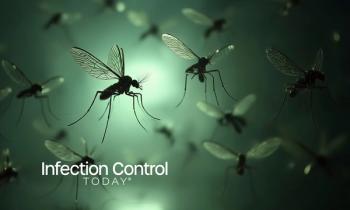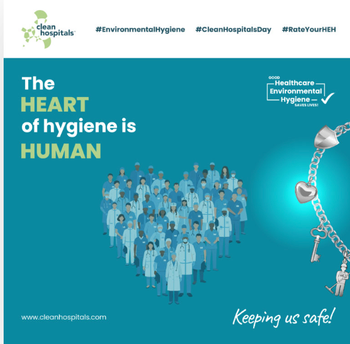
Product Evaluation and Purchasing: Surgical Products
In a recent online survey of ICT readers, 73 percent of respondents indicated that they are involved in infection prevention-related product evaluation and/or purchasing for their healthcare institution, confirming the findings of Hoeksema (2011) who emphasizes that perioperative nurses play a key role in evaluating product safety, effectiveness and efficiency, environmental concerns, and cost and how these factors affect patient care. Well-informed product evaluation and purchasing is a significant way for hospitals to combat rising expenses in an environment of moderate reimbursements, Hoeksema (2011) adds.
By Kelly M. Pyrek
In a recent online survey of ICT readers, 73 percent of respondents indicated that they are involved in infection prevention-related product evaluation and/or purchasing for their healthcare institution, confirming the findings of Hoeksema (2011) who emphasizes that perioperative nurses play a key role in evaluating product safety, effectiveness and efficiency, environmental concerns, and cost and how these factors affect patient care. Well-informed product evaluation and purchasing is a significant way for hospitals to combat rising expenses in an environment of moderate reimbursements, Hoeksema (2011) adds.
Esther M. Johnstone, DNP, MSN, RN, CNOR, a perioperative practice specialist with AORN, acknowledges that the most challenging aspect of evaluating and purchasing products are balancing cost and quality. "Striving toward standardization can reduce waste, increase cost savings, retain quality, and improve processes," she says. "However, standardization may lead to an increase risk for user error and may affect patient safety. Another challenge when selecting products is keeping up with the technological advancements while meeting the needs of various stakeholders. Stakeholders from all departments should be included on a multidisciplinary committee when selecting products that are cost effective, environmentally friendly, and safe. In addition, there are complex healthcare organizations that serve multiple patient populations with diverse needs. For example, selecting a product as simple as dressings brings unique challenges that include; selecting dressings that are appropriate for different body types, skin integrity, and patient populations (pediatric, adult, and geriatric). Furthermore, there are cultural and religious preferences that need to be considered."
To help reconcile these numerous challenges, perioperative personnel can consult the Association of periOperative Registered Nurses (AORN)'s Guideline for Product Selection, which outlines guidance for evaluating and purchasing medical devices and other products used in perioperative settings. Let's briefly review the recommendations contained in this guideline:
Recommendation I: A mechanism for product selection should be developed. As the guideline explains, "A mechanism for product selection assists with consistently selecting functional and reliable products that are safe, cost-effective, and environmentally friendly; promote quality care; and prevent duplication or rapid obsolescence." To this end, AORN recommends the establishment of a multidisciplinary product evaluation and selection committee, and that "perioperative RNs should have an integral role in the evaluation and selection of surgical products."
Recommendation II: The multidisciplinary committee should develop a process to guide product selection. As the guideline explains, "The committee should gather information about new or existing products from professional resources and the manufacturer." AORN's guideline adds that " Consistent requirements should be identified for each product under evaluation," and recommends that product-specific requirements should include, but not be limited to: contractual agreements such as warranties and maintenance agreements; required compatibility with new or existing products; compatibility with existing disposal methods; compatibility with existing reprocessing methods; procedure-related requirements; end-user preference and requirements; patient-related requirements; compliance with federal, state, and local regulatory agencies such as the Occupational Safety and Health Administration (OSHA) or the Food and Drug Administration (FDA); and compliance with standards-setting bodies. Additionally, the AORN guideline recommends performing a financial impact analysis on each product to be purchased, to include: direct costs (such as cost of the product, replacement strategy, associated equipment); indirect costs (such as utilities, waste disposal, processing, training, storage, energy utilization, depreciation, retrofitting to existing equipment); reimbursement potential; and group purchasing organization (GPO) contract pricing.
Recommendation III: Perioperative RNs should demonstrate competency related to product evaluation and selection. AORN emphasizes that healthcare institutions should provide educational programs regarding the following: specific steps required for product selection; safe care and handling of products; selection of products; the environmental effects of healthcare, new environmental conditions, and appropriate green responses; governmental regulations regarding purchasing and product requirements; reprocessing, repair, recycling, and refurbishing initiatives of the healthcare organization; and how to evaluate and provide objective input on the product’s appropriateness and effectiveness.
Recommendation IV: The product selection process and any product-specific information should be documented. As AORN notes, "Documentation of this information provides retrievable records to answer potential questions regarding the justification for purchasing a specific product and for future purchasing decisions."
Recommendation V: Policies and procedures for evaluating and selecting products should be developed, reviewed periodically, revised as necessary, and readily available in the practice setting. As AORN's guideline explains, "Policies and procedures assist in the development of patient and worker safety, quality assessment, and improvement activities. Policies and procedures establish authority, responsibility, and accountability within the facility. They also serve as operational guidelines that are used to minimize patient and worker risk factors, standardize practice, direct staff members, and establish guidelines for continuous performance improvement activities."
Recommendation VI: A quality assurance/performance improvement process should be established to measure product performance to include post-purchase cost effectiveness and user satisfaction. As AORN notes, "This evaluation helps to ensure that new products are meeting expected performance criteria (e.g., cost-effectiveness, product life span) and that the preselection evaluation process has met its objectives."
Even with readily available recommendations, some perioperative personnel may struggle with implementation of the guidance. According to Johnstone, the gaps in knowledge about the process of evaluating and purchasing products that perioperative nurses may have include:
- How much does each item cost (i.e., blade, suture ties, suture, sponges)?
- How much does each procedure cost?
- How much does the health insurance company reimburse the healthcare organization?
- How much does it cost to use the equipment in the OR?
"When perioperative nurses understand and recognize the cost implications for each item, used for each patient and each procedure, they can be better prepared to make cost effective decisions on product selection and use," Johnstone says.
Collaboration may be the key to better decision-making in the product evaluation and purchasing arena; infection preventionists can join their facility's perioperative staff in the process. As AORN (2010) notes, "... increasing focus on infections and reduction of hospital-acquired infections (HAIs) has infection control practitioners (ICPs) playing a greater role in purchasing committees and they are among the first to point out that nurses are a key reference when it comes to making the case for a certain product. ICPs use data regarding cost, efficacy, and end-user clinical evaluations to support their recommendations. In many instances, the end-user is a nurse."
Perioperative nurses can also share their expertise with their institution’s purchasing managers to facilitate decision-making. One area in particular is clinical effectiveness. "Nurses can provide real use information about a product’s usability, effectiveness, quality, and safety concerns," Johnstone says. ". Nurses can provide constructive feedback about a product that may increase labor costs. An organization purchases a lower quality product that requires frequent replacement and maintenance can affect patient safety. For example, a medical device may be twice as difficult to use, and frequently sent out for repair, increasing labor and maintenance costs. In addition, instruments are often selected without input from the sterile processing department. Consequences of not including all stakeholders like the sterile processing department (SPD) can be profound. For example, if an organization purchases a complex instrument system that requires lengthy processing measures can cause delays."
A second area of expertise among perioperative nurses according to Johnstone is knowing that although healthcare organizations may purchase a product that works well in the nursing units, it may not be suitable to the unique needs in the operating room. "For example, a medication that can be administered in the nursing unit but needs to be administered to the sterile field aseptically in the OR," Johnstone explains. "The healthcare organization may need to purchase a sterile transfer device for the medication to be administered in the OR. Including perioperative nurses on a product selection committee is essential to the selection of cost effective and suitable products."
References:
AORN. Guideline for product selection. In: Guideline for Perioperative Practice. 2017:183-190.
AORN. Product Selection: Key Considerations; The Vital Relationship Between Industry and the Perioperative Nurse. 2010.
Hoeksema J. Taking steps to control costs in the OR. AORN J. 2011 Dec;94(6 Suppl):S79-84.
Infection Control Today. Operating Room State of the Industry Survey. February 2017.
Pyrek K. Product Evaluation and Purchasing Advice for Perioperative Nurses and Infection Preventionists. Aug. 17, 2012. Available at: http://www.infectioncontroltoday.com/articles/2012/08/product-evaluation-and-purchasing-advice-for-perioperative-nurses-and-infection-preventionists.aspx
Newsletter
Stay prepared and protected with Infection Control Today's newsletter, delivering essential updates, best practices, and expert insights for infection preventionists.





